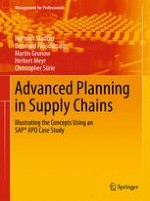Advanced Planning Systems (APS) are a key enabler of the supply chain management. However, APS are highly complex and difficult to comprehend. This book provides students with valuable insights into the capabilities of state-of-the-art APS and bridges the gap between theory (model building and solution algorithms), software implementation, and adaptation to a specific business case. Our business case – named Frutado – provides a unifying framework for illustrating the different planning tasks that arise in a company – from demand planning to the distribution of goods – that are addressed by APS. In addition, the book guides through interactive learning units which have been created and recorded for each module of SAP´s APS. Learning units can be downloaded free of charge ready to be displayed in a web browser. Together, the textbook and the learning units provide the required skills to better understand the concepts, models, and algorithms underlying today´s APS.
